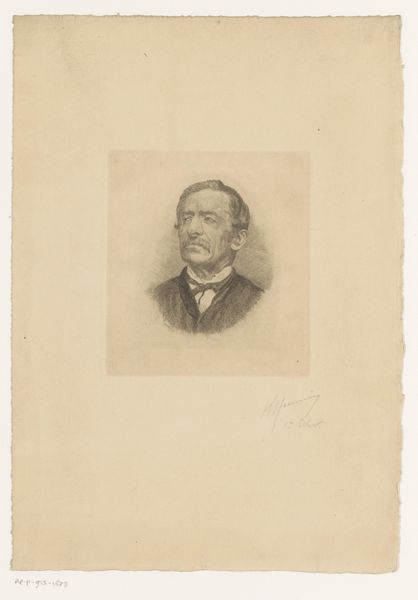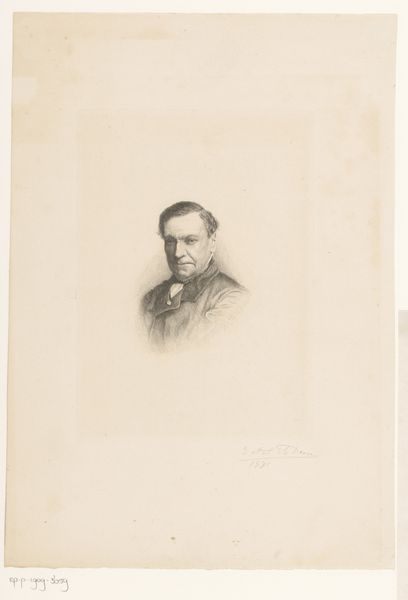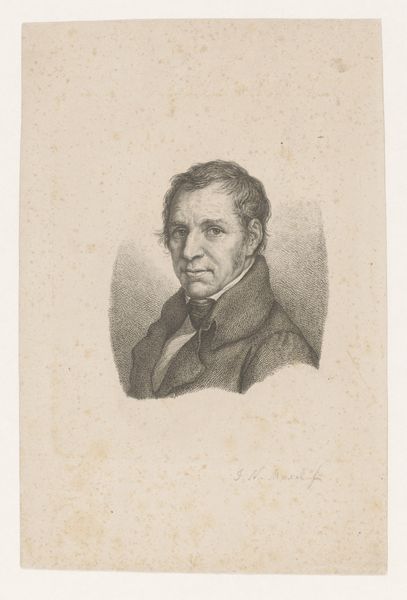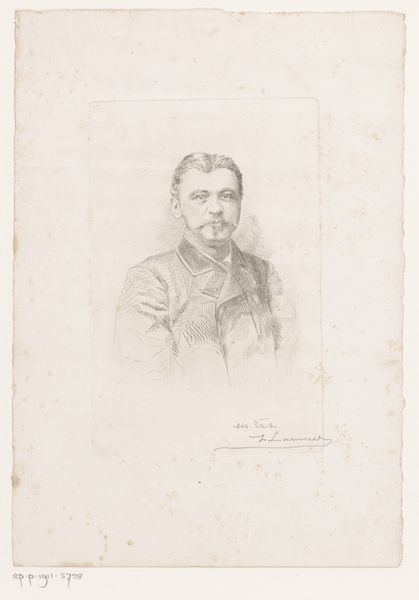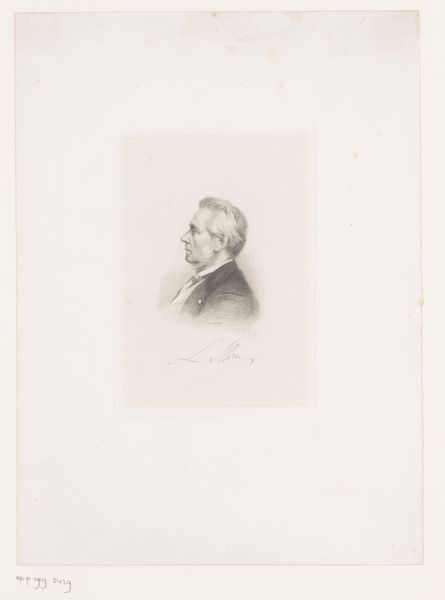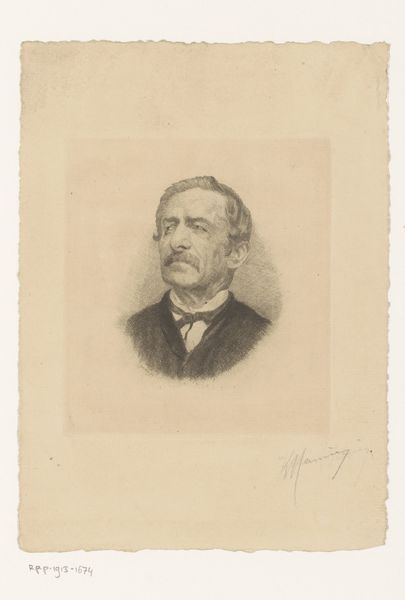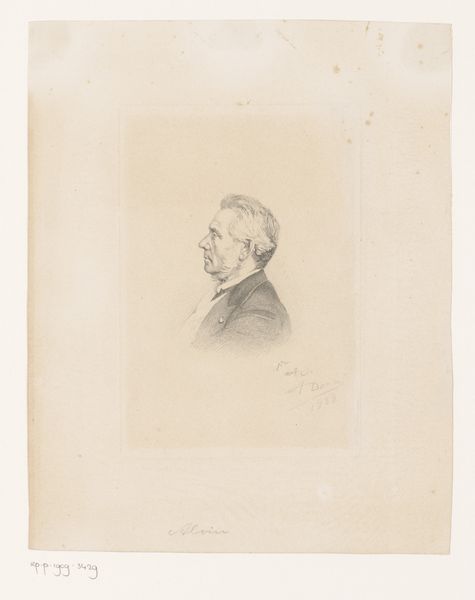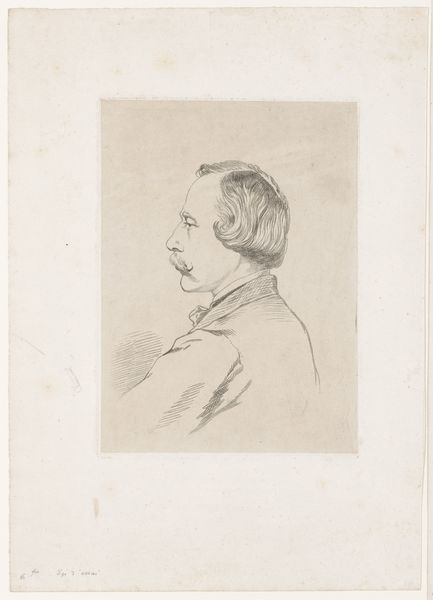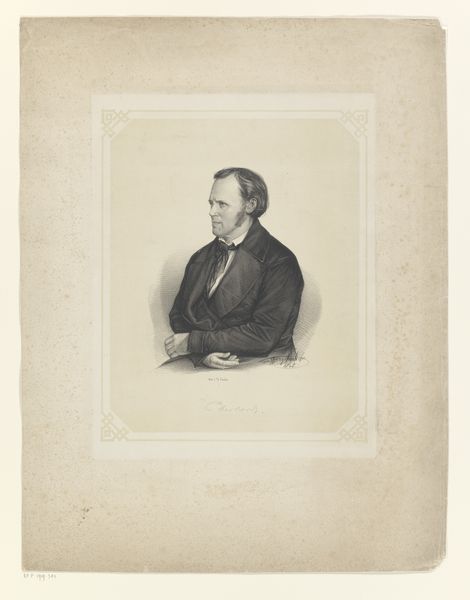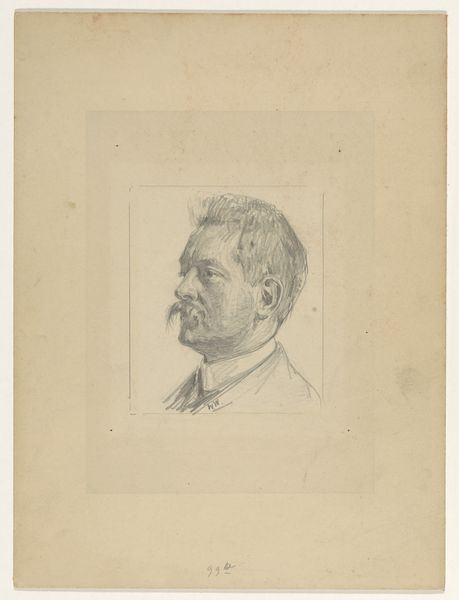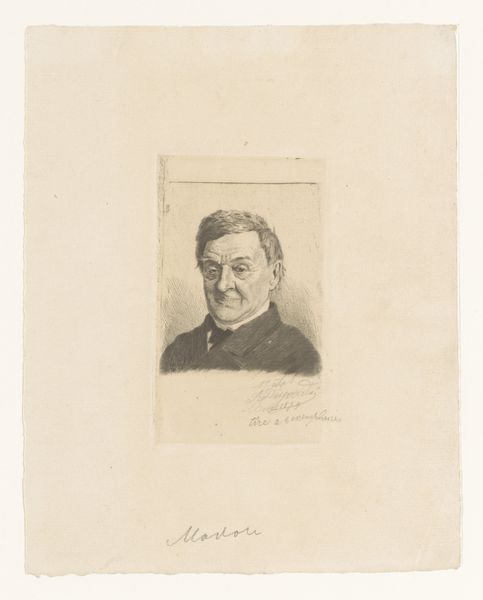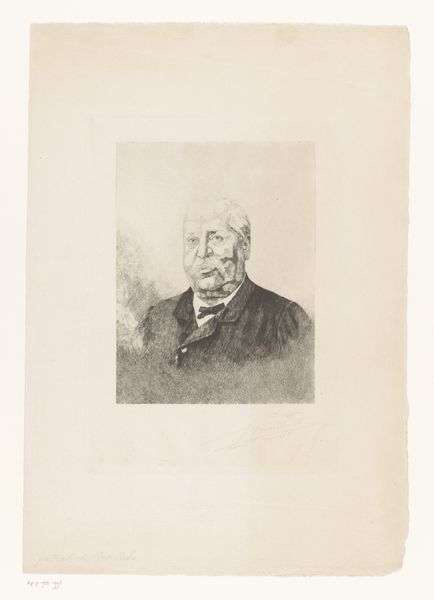
drawing, pencil
#
portrait
#
drawing
#
pencil drawing
#
pencil
#
realism
Dimensions: height 197 mm, width 140 mm
Copyright: Rijks Museum: Open Domain
Curator: What a fantastic likeness. Auguste Danse’s "Portret van Eugène Verboeckhoven" from 1881, residing here at the Rijksmuseum, offers an intimate glimpse into the face of a contemporary. What springs to mind for you, Editor? Editor: Stark and somehow melancholic, Curator. The precision of the pencil work brings the subject vividly to life, yet there's a muted quality— a kind of grayness— that I find quite evocative. There’s something very… bourgeois about his expression. Curator: It is an interesting emotional register, and your reading certainly echoes sentiments present in naturalist portrayals of the time, the late 19th century, where revealing inner states became so important. The detail in his jacket, compared to, say, the suggestive nature of the hair, shows an intriguing contrast. What might Danse be wanting us to focus on? Editor: Right, the textures. I think it begs the question: How are respectability and individuality constructed through artistic representation, particularly of men like Verboeckhoven? I want to know: who was the target audience for Danse’s work and what purpose did it serve in the artistic milieu of its day? Was Danse simply documenting an artist of his time, or was he making a comment about the place and position of the artist in bourgeois society? Curator: That’s an excellent point. We see this move, culturally, toward representing artists— even lionizing them— while concurrently dissecting, through realistic depiction, the psychological and social costs of genius, maybe? Or at least, fame? The level of finish here in the drawing shows, also, a huge respect for his craft; to depict an artist demands, I think, this kind of fidelity. I'm struck by its vulnerability, despite that fidelity, and also the sense of weariness in the sitter's eyes. Almost as if Verboeckhoven, himself, were questioning the price of fame. Editor: Precisely, and I appreciate the nuance. It reminds us to continually interrogate the dynamics between the artist, the subject, and the broader social canvas. It is more than just a picture, right? It's a narrative etched in pencil about visibility, representation, and the elusive essence of the self. I like the ghostly quality. Curator: Beautifully said! It reminds us that every portrait is not only a capture, but a question. Thanks for opening my eyes even further!
Comments
No comments
Be the first to comment and join the conversation on the ultimate creative platform.
